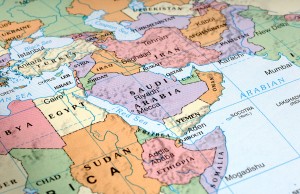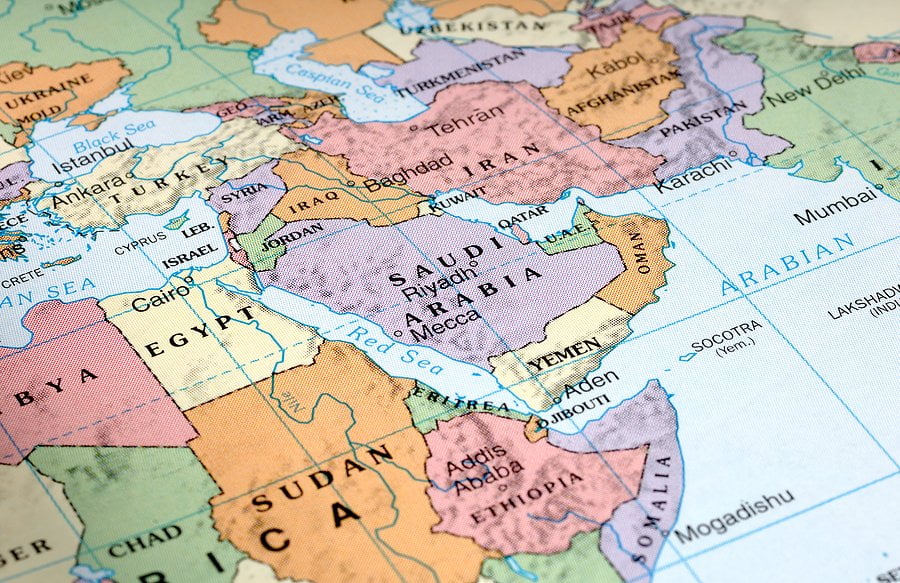2012-08-09 By Richard Weitz
Now that all U.S. combat forces have left Iraq, Iranians believe that the Iraqi government will become even more cooperative on matters of importance to Tehran.
Similarly, al-Maliki’s recent confrontational policies with Iraqi Sunnis and Kurds, much to the dismay of Turkey and the United States, could soon force him to rely more on Tehran despite his desires. For example, the two countries could collaborate to halt the autonomous aspirations of their minority Kurds, stimulated by developments in Iraq and Syria, or to counter the influence of Turkey and the United States.
Despite all these Iranian advantages, Iraq is not destined to fall under Tehran’s control.
Tehran’s influence in Iraq remains constrained by the efforts of other foreign powers (especially the United States and Turkey), by Iraqi politicians and militias opposed to Iran and its Iraqi allies, the autonomy exercised by Iraq’s Kurdish and Sunni regions from the Iranian-leaning government in Baghdad, and, above all, Iraqi nationalism, which resists the efforts of any foreign country, including Iran, to dominate Iraq.
Iran and Iraq’s stormy past represents a substantial obstacle to better ties. The traumatic 1980-88 Iran-Iraq War, which never ended with a formal peace treaty, institutionalized deep mutual suspicions. With more than one million casualties, the conflict was one of the deadliest of the 20th century. Beyond human costs, the economic damage was staggering, with some estimates placing the total expenses and lost economic revenue at more than $1 trillion dollars.
Although hostilities ceased in 1988, lingering animosity over various issues persists to this day, particularly the question of culpability. Iraq’s postwar government has accepted that their country started the war, but they blame Saddam for the aggression and argue that his successors should not be punished for the crimes committed by the previous regime.

Throughout the 1990s, under the dual containment policies of the Clinton administration, Iraq and Iran continued to view each other and not the United States as their greatest source of insecurity. The Iranian armed forces remained fearful of the Iraqi regime’s posturing toward Iran and had contingency plans for renewed Iraqi provocations over border disputes.
Along with the United States and its Gulf allies, Iran was unable to find acceptable solutions to the range of security challenges presented by Iraq, including its presumed possession of weapons of mass destruction, its territorial encroachment on neighboring states, converse fears that the repressive regime would disintegrate into a vacuum of mini-states with prodigious geopolitical consequences, and Iraq’s powerful competing position with Iran in the international oil market.
The minority Kurdish populations that straddle the two countries as well as Turkey and Syria remain a source of mutual tension. The governments in Baghdad and Tehran have periodically supported terrorist campaigns by the alienated Kurds in one another’s countries. In late July 2011, Iraq’s foreign minister demanded that Iran stop shelling Kurdish rebels inside Iraq.
Additionally, Iran still continues to provide Shiite militias in Iraq military and financial support.
In July 2011, Admiral Mike Mullen, the U.S. Chief of Staff, said that, “Iran is very directly supporting extremist Shiite groups which are killing our troops” and added that, “There is no question they are shipping high-tech weapons in there.”
This most recent push may have been an effort on the part of Iran to reassert its authority in advance of the U.S. withdrawal from Iraq at the end of 2011. Furthermore, many Iranian weapon deliveries flow into southern Iraq. The militias have established an alternative power base backed by Tehran that Iran uses as leverage with the Iraqi central government in Baghdad.
Popular irritation with Iran’s heavy-handed presence in Iraq and other factors has contributed to Iraqi voters inflicting major setbacks to pro-Iranian groups. In the January 2009 and March 2010 elections, pro-Iranian parties like the ISCI did poorly.
The Dawa Party, which employed Iraqi nationalist rather than Shiite-oriented rhetoric, won a majority of the votes in Shiite-dominated southern Iraq under its new nationalist moniker, the State of Law Party. Prime Minister al-Maliki, leader of first Dawa and now the State of Law, has since sustained cordial relations with Tehran but has also sought to maintain ties with Washington and other actors to avoid becoming dependent on Iranian support. For example, he negotiated the U.S.-Iraq Strategic Framework agreement, signed in November 2008, with the U.S. occupation forces despite strong Iranian opposition.
The 2009 provincial elections and the 2010 national elections further demonstrated the difficulties Iran faces in constructing a majority Shiite coalition in Iraq loyal to Tehran.
Iraq’s political, religious, and social makeup is very different from those of Iran.
Even the Shiites of the two countries obviously diverge ethnically, linguistically and historically. Quite apart from the presence of large numbers of Sunnis, Kurds, and Turkmen in Iraq, the country’s Shiite community is itself diverse. There are secularists (including liberals and communists) and devoutly religious Shiites, urban and rural dwellers, rich and poor Shiites, as well as Shiites who have never left Iraq and those who have spent decades in exile.
There is also no single leader who could speak for all Iraqi Shiites, let alone oversee the transformation of post-war Iraq into an Iranian-style Islamic republic. Indeed, the liberation of Iraq’s Shite communities could widen Iran’s own political fault lines, which should further induce Iranian caution.
Iran’s interventions in Iraqi politics have frequently been poorly coordinated with its other activities in Iraq—such as its support for militant groups or its handling of border disputes—indicating a lack of coordination in Iran’s whole-of-government approach to Iraq. Some parts of the Iranian elite have supported the Iraqi government while at the same time other parts have backed violent militias that undermined Baghdad’s authority.
Iranians propagate the concept of Shiite unity and takes advantage of Iraq’s generally unfriendly Sunni neighbors to present Tehran as the new government’s major regional ally. But Iranians have been on the forefront of encouraging and exploiting sectarian tensions in Iraq.
The Iranian government has publicly distanced itself from the insurgency in Iraq, yet Iranian sources have supplied weapons to the guerrillas and terrorists in Iraq. In addition, they conspired against Sunni Arab states, yet tried to extend bridges of communication to some of them, such as with Turkey in 2009 and 2010.
This strategy of contradictions could reflect the preferences of the competing and autonomous actors in Iran. It might also be a clumsy attempt to enhance Iranian options and levers of influence. Whatever its causes, the policy has weakened Tehran’s influence in post-Saddam Iraq.
Even the increased bilateral economic ties have had some negative economic consequences in Iraq since the policies aim to make Iraqis economically dependent on Iran.
The Iranian government subsidizes exports to Iraq through tax breaks and other incentives while imposing high tariffs on Iraqi imports into Iran. As a result, Iranian goods are sold in Iraq at below market prices. This makes it extremely difficult for Iraqi products to compete with Iranian goods. But by dumping cheap, subsidized food products and consumer goods into Iraq, Iran has weakened Iraq’s agricultural and manufacturing sectors.
Likewise, Iran’s damming and diversion of rivers feeding the Shatt al-Arab waterway has undermined Iraqi agriculture in the south and prevented efforts to revive Iraq’s marshlands. As a result, in 2008, Iraq became a net importer of food. Furthermore, Iran refuses to return any of the 153 Iraqi military and civilian aircraft that were flown to Iran at the start of the 1991 Gulf War, many of which are in use in Iran, whose air fleet suffers shortages due to international sanctions.
Although Iran has supplied electricity to neighboring Iraqi communities and plans to export natural gas to Iraq, Iranians do not welcome the revival of Iraq’s oil industry, which could lower world oil prices as Iraq increases its exports. They further worry that major international oil companies will invest in Iraq’s hydrocarbon production rather than Iran’s oil industry since the sanctions make energy dealings with Iran prohibitively costly.
Iraq’s oil production may well surpass that of Iran in coming years as Iraqi fields return online and Iranian production stagnates due to lack of foreign technology and investment. Iraqi and Iranian representatives have been lobbying against each other as they compete for future OPEC production quotas. Iranians are aware that Iraq’s government plans to use its oil revenue to fund its comprehensive rearmament program.
From meddling in Iraqi politics to exacerbating Shiite-Sunni tensions, Iran has orchestrated a strategy designed to neutralize any threat posed by Iraq in the near future as well as use Iraq as a beachhead to project Iranian influence elsewhere.
Despite the departure of all U.S. combat troops at the end of 2011 and the marginalization of Iraq’s anti-Iranian politicians, Iran has not foregone the military option in Iraq. Even as U.S. forces were leaving Iraq, Iranian-backed militias were displaying ever more power weapons to discourage the Iraqi government from asking some U.S. troops to stay or return beyond 2011. These weapons are now available for possible use in renewed sectarian violence.
Iran’s interference in Iraq threatens to aggravate Iraq’s sectarian divisions and undermine efforts to build a stable government in Baghdad. Governments opposed to Iranian policies in Iraq use Iraqi territory as a battlefield for a proxy war to counter Iranian expansionism. Some finance militant Sunni resistance to counteract Iranian influence, which is centered on Iraq’s Shiite population.
Another possible outcome might be the Lebanonization of Iraq.
The sectarian divide in Iraq provides Iranians with an irresistible opportunity for meddling. They not only support diverse Shiite groups and play them against each other, but they also encourage Kurdish, Sunni, and other rival groups to the Baghdad government to challenge its authority and thereby keep Iraq weak and vulnerable to Iranian interference. This strategy risks dividing Iraq into sectarian enclaves and returning the country to terrorism, violence, and chaos. This situation would generate large refugee flows to neighboring countries and export instability and sectarian terrorism.
A more benign outcome would see Iraq’s new leaders, who are seeking to consolidate their power; naturally strive to strengthen their autonomy from Tehran as well as Washington and Ankara. In this endeavor, Iraq would benefit from the revival of Arab nationalism.
The recent Arab Spring revolutions may further empower these governments to counter Persian nationalism, a legitimate force but of inherently limited appeal.


